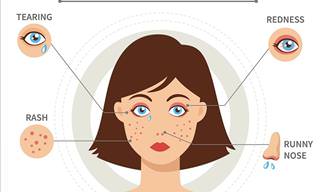You may have come across terms like "prediabetes," "borderline diabetes," "impaired glucose tolerance," or "insulin resistance" before. All of these terms refer to a stage before the development of type 2 diabetes. In this stage, blood sugar levels are higher than normal but not high enough to be classified as diabetes. During the prediabetic stage, the pancreas still produces sufficient insulin in response to carbohydrate digestion. However, insulin is less effective at removing sugar from the bloodstream, resulting in high blood sugar levels. The good news is, prediabetes can be prevented with lifestyle changes, and it does not always progress to diabetes.
Warning signs of prediabetes
Detecting this health condition is challenging, as symptoms are apparent in only 20% of individuals. However, it is essential to keep a lookout for certain indicators that increase the risk of developing diabetes, as per the US National Institute of Diabetes and Digestive and Kidney Diseases (NIDDK). Here are the major ones:
- Being overweight / having excessive abdominal fat
- Lack of physical activity
- Age 45 and above
- High blood pressure or cholesterol
- Familial connection to type 2 diabetes
- A medical history of heart attacks, strokes, gestational diabetes, or polycystic ovary syndrome.

Signs that it is indeed prediabetes
Regular medical check-ups are crucial for individuals with risk factors associated with prediabetes, a disease that often passes unnoticed. To identify prediabetes early on, doctors may recommend laboratory tests such as glycated hemoglobin (HbA1c) or the oral glucose tolerance test (OGTT). The HbA1c test provides a better overall picture of an individual's sugar levels in the past three months compared to the OGTT.
Normal HbA1c levels range between 4-5.7%, while levels between 5.7-6.4% are indicative of prediabetes. To minimize the risk of developing prediabetes or diabetes, certain preventative measures should be taken.
How to reduce the risk of diabetes and prediabetes
Now we have reached the most important part - prevention, which is recommended for anyone who is at one level of risk or another, even more so if they have not yet developed insulin resistance. Fortunately, in a large-scale study conducted under the banner of the NIDDK Diabetes Prevention Program, it was discovered that there is much hope for all those at risk. The study showed that, with the help of certain lifestyle changes, the risk of developing diabetes can be reduced by 58% within 3 years, which is the period in which diabetes itself may already appear (3-5 years from the moment prediabetes is discovered).
1. A balanced diet
- Try to consume as many foods rich in nutrients, such as fruits, vegetables, lean proteins, and heart-healthy fats. Dietary fiber is especially important in the diet.
- As far as grains are concerned, make sure to choose complex carbohydrates (whole grains).
- Limit your consumption of sugar, including sugary drinks and baked goods, as they lack essential nutrients.
- Consider consulting a nutritionist to create a daily or weekly meal plan that includes pre-diabetic-friendly foods.

2. Physical exercise
- Try to exercise for a total of 150 minutes per week, or 30 minutes per day, 5 days a week.
- Engage in physical activities such as walking, cycling, swimming, or hiking.
3. Maintaining a healthy weight
- Maintaining a healthy weight is also crucial, as excess weight and abdominal fat increase your risk of developing prediabetes. Experts recommend losing at least 5-7% of body weight and 30% of abdominal fat to lower your risk.
- Consulting with a medical practitioner or a nutrition expert about the modifications required in your diet is crucial. In case it is necessary, you can also reach out to a fitness trainer. They can customize exercises for you that can aid your body in achieving a safe weight.
4. Medications
- The treating doctor may recommend medications like metformin, which was found to be highly effective at preventing diabetes.
- However, not everyone is immediately given medication upon diagnosis. It is recommended that lifestyle changes be made first for a few months.
- The duration for which medication is prescribed varies from patient to patient, depending on their overall health, age, and the risk factors they are exposed to.

Start today
Aside from medications that are typically administered once efforts to alter one's lifestyle have been exhausted, you may consider the remaining tips blanket advice for overall well-being. However, they serve as a reminder that the state of your health is your responsibility, especially when dealing with prediabetes. Preventing the illness is entirely up to you. By prioritizing your health today, you will do yourself a favor in the future by saving money on medication and avoiding unnecessary suffering.
 Go to BabaMail
Go to BabaMail






















































